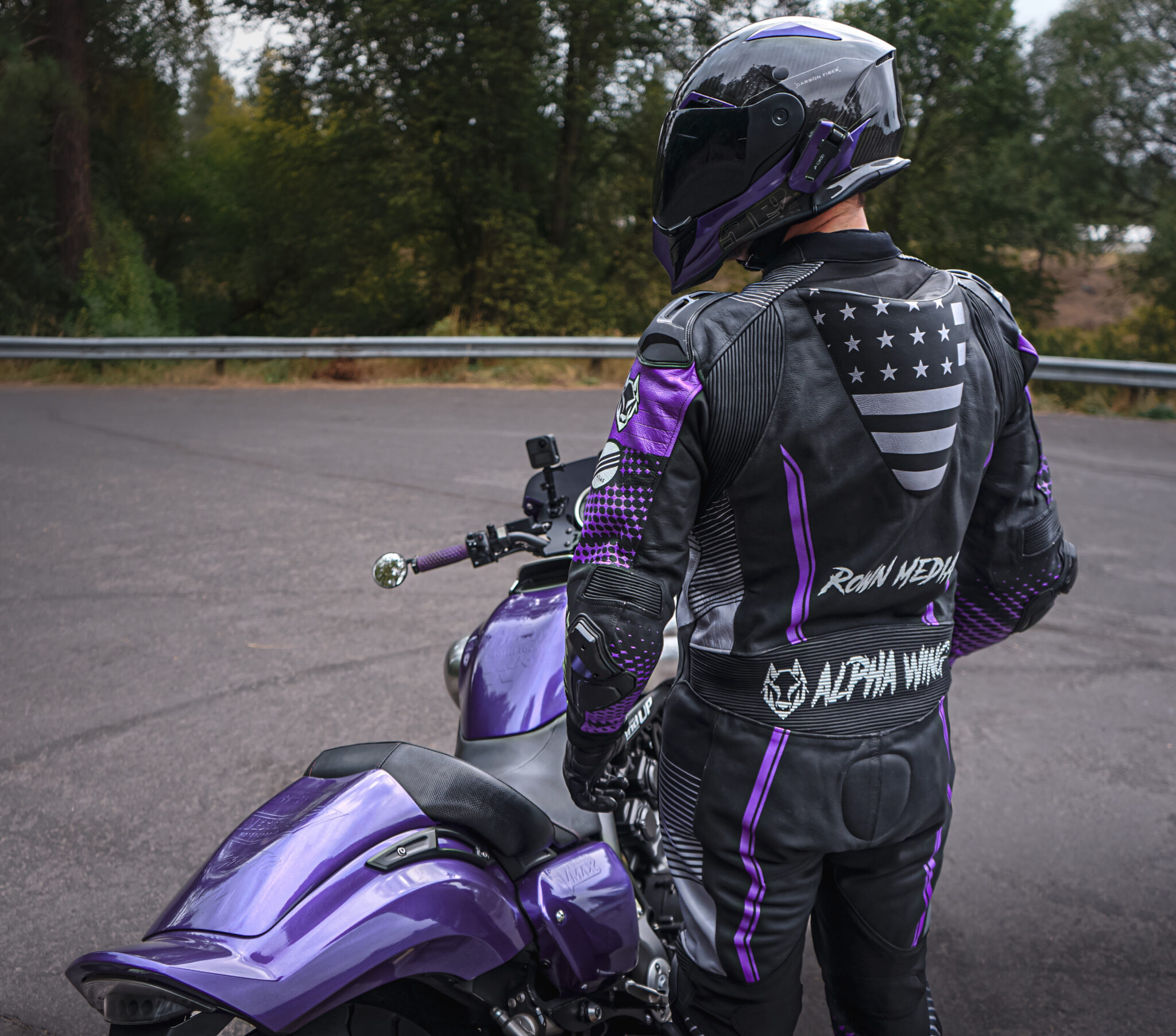Blog
What to Look for in a Leather Racing Suit?

If you’re serious about motorcycle racing, investing in the right gear is non-negotiable. At the top of that list is your leather racing suit, the ultimate armor between you and the asphalt.
But with so many options available, how do you know what to look for in a leather racing suit?
In this guide, we will break down the key features, materials, safety standards, and fit considerations to help you make the best choice for both performance and protection.
Why Leather Racing Suits Are Still the Gold Standard
Leather remains the top material for motorcycle racing suits due to its superior abrasion resistance.
While textile options are improving, professional racers and track riders still prefer leather suits for their durability and reliability during crashes.
1. Material Quality: What to Look for in a Leather Racing Suit
The type and quality of leather matter. Here’s what to focus on:
- Cowhide Leather: Most commonly used; strong and cost-effective.
- Kangaroo Leather: Lightweight and more flexible but comes at a higher price.
- Buffalo Leather: Heavier but very durable.
Always check for:
- 1.2 mm to 1.4 mm thickness (ideal for racing)
- Tear resistance ratings
- Reinforced stitching with Kevlar or safety thread
2. CE Armor and Safety Certifications
Safety is the core purpose of a racing suit. Look for:
- CE Level 2 armor on shoulders, elbows, knees, and back
- Optional chest protectors and hip padding
- Sliders on knees and elbows for track maneuvering
- Integrated airbag system (premium suits)
Make sure all armor is removable and replaceable.
3. Fit and Comfort: Don’t Compromise
A proper fit means enhanced protection. Here’s what to look for in a leather racing suit when trying it on:
- Pre-curved arms and legs for a racing stance
- Stretch panels in key areas (inner thigh, armpits, back)
- Perforated leather for ventilation
- Moisture-wicking inner liner (removable is best)
- Adequate mobility without loose sections
Pro Tip: If you wear a back protector or chest guard, try the suit on with them to avoid sizing mistakes.
4. Seam Construction and Zippers
It’s not just about the leather, the construction counts.
- Look for triple or quadruple-stitched seams
- YKK zippers are preferred for durability
- Double-layered leather in crash zones (like shoulders, hips, knees)
5. Ventilation and Weather Suitability
Racing gets hot. Especially in summer. That’s why ventilation is crucial.
- Perforated panels across the chest, thighs, and arms
- Mesh liners to allow airflow
- Optional removable liners for varying temperatures
6. Customization Options (Optional, But Valuable)
Some riders want more than just fit — they want identity.
- Add team logos, name patches, or race numbers
- Choose from a range of colors or even reflective accents
- Get custom measurements for better ergonomics
AlphaWing, a top provider in the Netherlands, allows full customization of leather racing suits with CE-certified protection and advanced materials.
7. Budget: Balance Safety and Cost
While racing suits can range from €400 to over €1500, don’t cut corners on safety. You’re not just buying leather, you’re buying life-saving gear.
- Entry-Level: ~€400–€600 (basic protection, standard materials)
- Mid-Range: ~€700–€1000 (better armor, comfort, brand name)
- High-End/Custom: €1200+ (airbag-ready, race-tested)
Conclusion
Knowing what to look for in a leather racing suit ensures you’re not just buying gear, you’re investing in protection, performance, and peace of mind.
Whether you’re on a tight budget or aiming for a custom-tailored setup, the right suit can make all the difference on the track.
Ready to gear up? Explore premium custom options at AlphaWing Netherlands trusted name in racing apparel.
Read More Common Mistakes to Avoid When Buying Racing Suits
FAQs
1. How do I know if a leather racing suit fits correctly?
A proper fit should feel snug but not restrict your movement. Ensure you have no bagginess around joints, but still have room to breathe.
2. Can I use the same leather suit for both track and street?
Yes, but for street riding, choose one with better ventilation and convenience features like pockets or zippers for boots.
3. How often should I replace my racing suit?
If it has been in a crash or shows signs of leather wear, stitching fray, or armor degradation, it’s time for a replacement.

